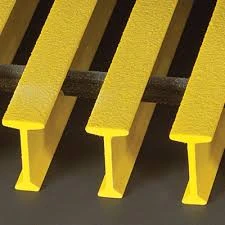loading...
- No. 9, Xingyuan South Street, Dongwaihuan Road, Zaoqiang County, Hengshui, Hebei, China
- admin@zjcomposites.com
- +86 15097380338
- Welcome to visit our website!
Innovative Design and Applications of Sectional Water Storage Tanks for Modern Infrastructure
Sectional Water Tanks A Comprehensive Overview
Sectional water tanks have gained popularity in various sectors due to their flexible design, ease of installation, and efficiency in water storage. In this article, we will explore the key features, benefits, and applications of sectional water tanks, as well as delve into their construction materials and maintenance considerations.
What Are Sectional Water Tanks?
Sectional water tanks, also referred to as modular water tanks, are storage systems composed of individual panels that can be assembled on-site to create a tank of desired size and shape. These structures can be made from a variety of materials, including steel, fiberglass, or concrete, and they are designed to hold a significant volume of water for various applications.
Key Features
One of the standout features of sectional water tanks is their modularity. This design allows for flexibility in size and shape, enabling tanks to be customized according to specific needs. Whether a small tank for residential use or a large-scale solution for industrial applications, sectional water tanks can be tailored to fit the available space and water requirements.
Another significant advantage is the ease of installation. Since these tanks arrive in separate panels, transportation costs are reduced, and assembly can often be completed in a fraction of the time compared to traditional water tanks. This makes them an appealing option for projects with tight schedules or limited access.
Benefits of Sectional Water Tanks
1. Space Efficiency The ability to shape and size the tank according to the available area means that sectional tanks can be installed in locations where traditional tanks would not fit. This is particularly beneficial in urban environments or sites with challenging terrain.
2. Cost-Effectiveness Constructing a large tank on-site can be expensive and time-consuming. Sectional water tanks bypass many of these costs by allowing for easy transportation and rapid assembly on location, ultimately reducing labor costs and project timelines.
3. Longevity and Durability Depending on the materials used, sectional water tanks can provide a long service life. For example, galvanized steel tanks are resistant to corrosion, while fiberglass tanks offer additional protection against environmental factors.
sectional water tanks

4. Flexibility If water storage needs change, sectional water tanks can often be expanded or reconfigured with relative ease. This adaptability is particularly beneficial for growing businesses or communities with fluctuating demands.
5. Health and Safety Many sectional tanks come equipped with features to ensure water quality, such as secure lids and non-toxic materials that prevent contamination. This is crucial for public health, especially when storing potable water.
Applications
The versatility of sectional water tanks means they find applications across various sectors. In residential settings, they are commonly used for rainwater harvesting and storage. In commercial and industrial environments, sectional tanks provide a reliable solution for water supply in manufacturing, agricultural processing, and fire protection systems.
Additionally, these tanks are favored in remote locations where water sourcing is limited. They can be transported easily to sites with minimal infrastructure, providing efficient water storage in areas that need it most.
Construction Materials
Sectional water tanks can be made from several materials, each offering unique benefits. Steel tanks are known for their robustness, while fiberglass tanks are lightweight and resistant to environmental stressors. Concrete tanks, on the other hand, are incredibly durable and can store large volumes of water. Choosing the right material depends on factors such as cost, purpose, and environmental conditions.
Maintenance Considerations
While sectional water tanks are designed for longevity, regular maintenance is essential to ensure optimal performance. This includes routine inspections for leaks, corrosion, and other signs of wear. Cleaning the tank periodically is also important to prevent the buildup of sediments and contaminants.
Conclusion
In summary, sectional water tanks provide a flexible, efficient, and cost-effective solution for water storage needs across various applications. Their modular design, combined with the potential for customization and ease of installation, makes them an attractive choice for residential, commercial, and industrial uses. As the demand for sustainable and efficient water management solutions continues to grow, sectional water tanks are likely to remain a vital component of water storage infrastructure.
-
The Rise of FRP Profiles: Strong, Lightweight, and Built to LastNewsJul.14,2025
-
SMC Panel Tanks: A Modern Water Storage Solution for All EnvironmentsNewsJul.14,2025
-
GRP Grating: A Modern Solution for Safe and Durable Access SystemsNewsJul.14,2025
-
Galvanized Steel Water Tanks: Durable, Reliable, and Ready for UseNewsJul.14,2025
-
FRP Mini Mesh Grating: The Safer, Smarter Flooring SolutionNewsJul.14,2025
-
Exploring FRP Vessels: Durable Solutions for Modern Fluid HandlingNewsJul.14,2025
-
GRP Structures: The Future of Lightweight, High-Performance EngineeringNewsJun.20,2025
